On the top of the apartment building kitty-corner to mine, a single blue heron sits on the roof. Almost every day, it’s there: wind, rain, snow or subarctic temperatures, the heron sits alone. Sometimes the bird is so still that I think it’s frozen in place. Other times, the wind ruffles its long feathers, sending them rippling out like long silver streamers.
While watching this creature, it occurred to me, do animals get bored? What exactly is that heron thinking about? Is it ruminating on past wrongs, planning a diabolical revenge, or simply thinking, “Where can I get some good takeout on this here roof?” I’m not sure why the heron talks like a southern gentleman, but the shadow of Foghorn Leghorn lingers long inside my head in all things bird related.
Animals are not humans, of course, so it’s impossible to know what goes on in this bird’s brain. It certainly looks like it is thinking hard, hunched over like an ancient reminder of dinosaurs past. Herons are raptors, after all. Birds of prey. Maybe this is what occupies its days: genetic memories of a glorious rampaging, a time long before humans and their all-consuming ways had taken over most of the planet.
The question of animal sentience is an interesting one, and once you start to think about it, more questions arise. How might bird thoughts differ from those of racoons or skunks? With octopus intelligence well established, how do we justify eating the poor suckers? But truly this is the case for almost all creatures, big or small. These days, I feel bad if I kill a silverfish. What if his silverfish mother is waiting for him to squiggle home and he never does? The guilt that comes just from existing in this world!
But back to our buddy the heron.
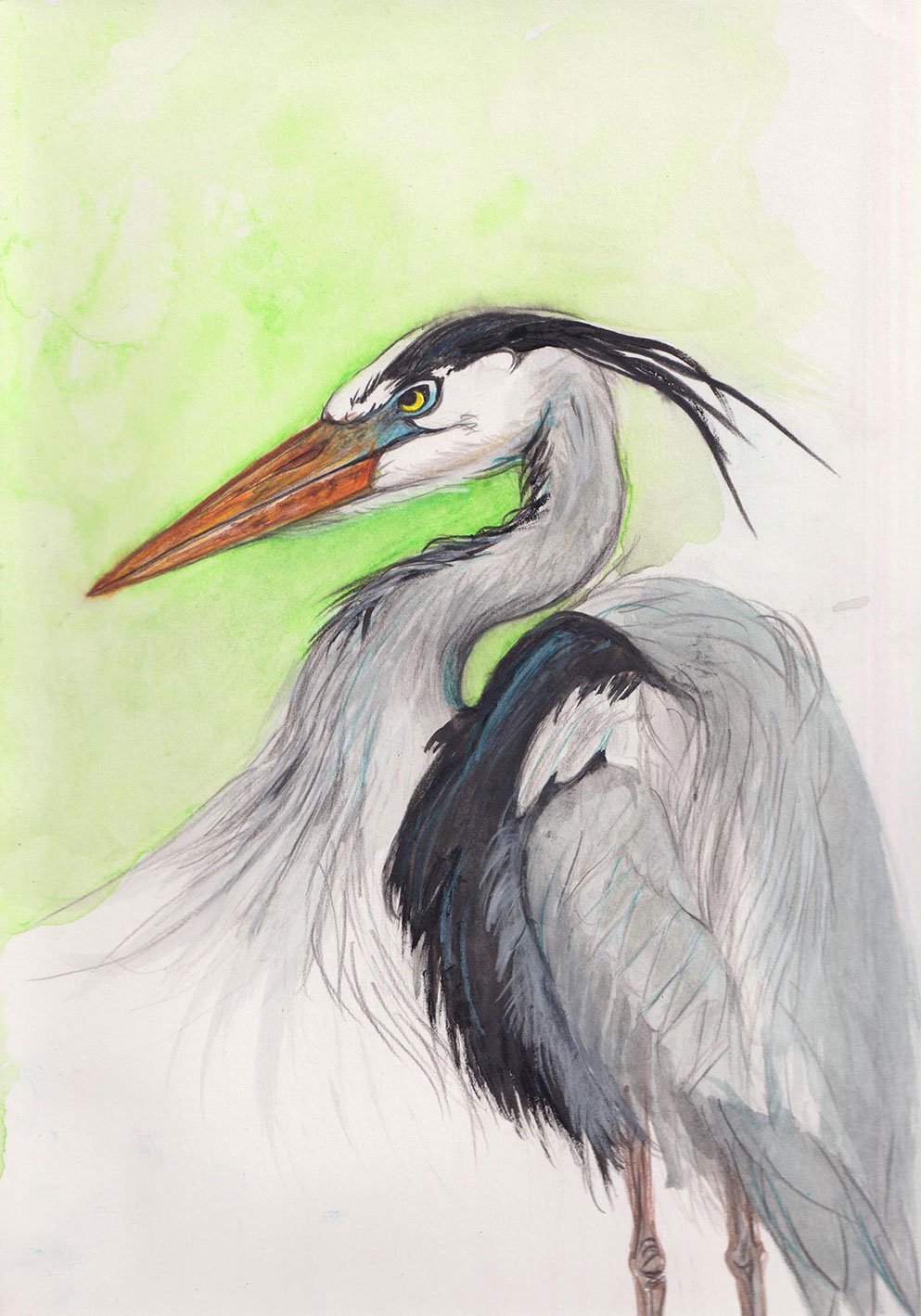
When it is sitting atop the roof, staring bleakly down at the human world, what does it see? Tourists headed out to zip gaily around the park on rented bikes. Locals staggering home with groceries and bottles of wine. From this vantage point, the heron sees all.
The other birds in the neighbourhood are equally busy, the crows staging ongoing wars with the seagulls, the riot of starlings making an unholy racket, and the flying jewel of a hummingbird, sitting still for an instant on the bare branches of a cherry tree, before zipping off on a critical errand, like a bullet of emerald green and ruby red.
To the human eye, at least, each animal is distinct in its personality, needs and wants. The crows are gregarious and social; the seagulls are the bully boys of the bird world. My neighbour is convinced that one particularly thuggish gull is trying to break into her apartment. Maybe she’s right? And deep in the night, the call of an owl: you can hear them, but you rarely see them. I still recall one sighting that was only a shadowy fleeting presence so riveting that all the hair on the back of my neck stood up like a mini hirsute army.
The heron rookery in Stanley Park is only a couple of blocks away and has been going so strong, for many years, that it is mentioned on the Wikipedia page dedicated to the habits and lifestyle of great blue herons.
The Stanley Park rookery is such a beloved local West End fixture that it features a heron cam, an adopt-a-nest initiative ($54!) and a documentary film. Coolio! At least to me. Other folks are less than thrilled with the raucous noise and interesting smells emanating from heron central.
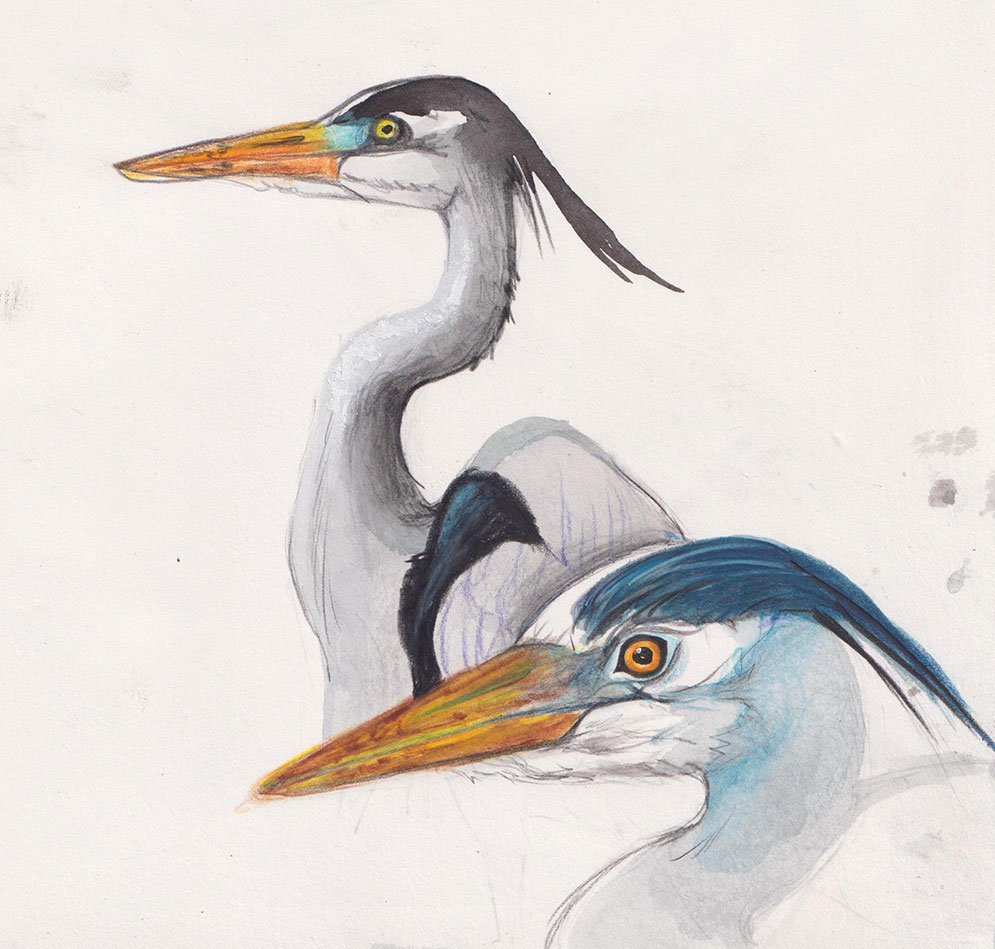
When you look closely at herons, they are startling in the design elements, like something dreamed up by Charles Rennie Mackintosh. The famed Scottish artist, who was a prominent member of the Glasgow School art and design movement, couldn’t have dreamed up a more elegant palette: slate blue, silver grey, with a delicate stippled border of darker feathers, handsome in extremis. Who could not love this lovely fella?
It's an ongoing human habit to transfer emotions, needs and wants onto some poor unsuspecting animal. We’ve been doing it since we clambered out of the trees, picked up a bit of charcoal and started drawing pictures of beasts, both big and small, on cave walls. According to researchers, the oldest known depiction of an animal is an Indonesian cave painting of a pig, of all creatures.
Herons aren’t immune to this anthropomorphic habit. They’re probably even more prone to it, sitting as still as they do, so that we people can gaze long and hard upon them.
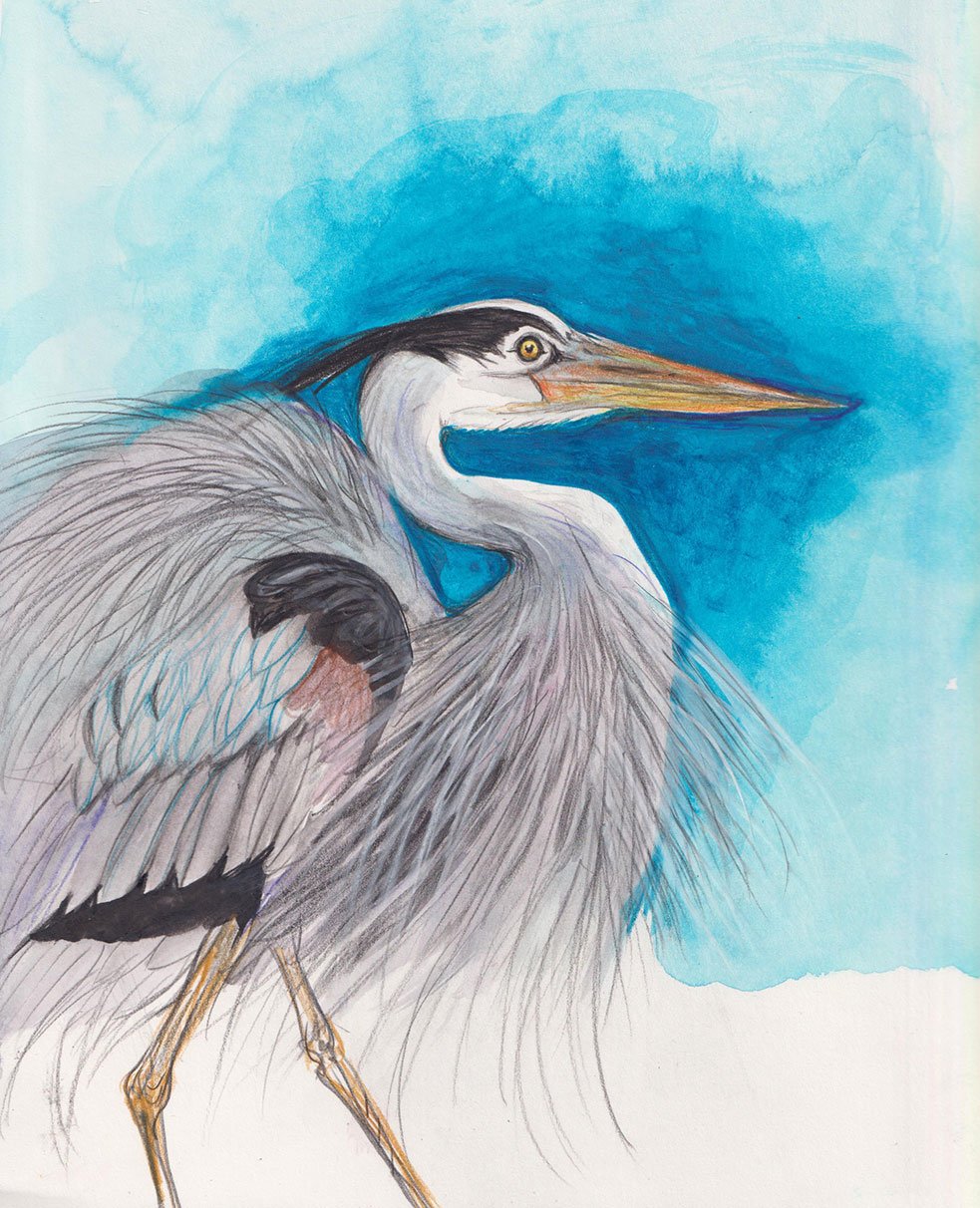
The other day, I looked out the window and the heron was gone. No forwarding address, no friendly wave to say so long. It just vanished. But in his absence, I’ve decided he is a he — a female bird probably has other priorities and a greater social circle as well. She’s probably cackling with the other female herons, about how silly the males in this town are. Maybe that’s what he’s doing up there, thinking about love gone wrong. The loneliness seems palpable. So maybe it’s not boredom, but heartbreak.
The Heartbreak Heron, as I now think of him, has come to symbolize all the lone creatures, taking a stand out there in the wide, wild world.
Maybe when the springtime season of romance rolls back around, the lone bird will take to the skies and find love once more. There’s hope for all us creatures. At least, I hope so. ![]()
Read more: Environment




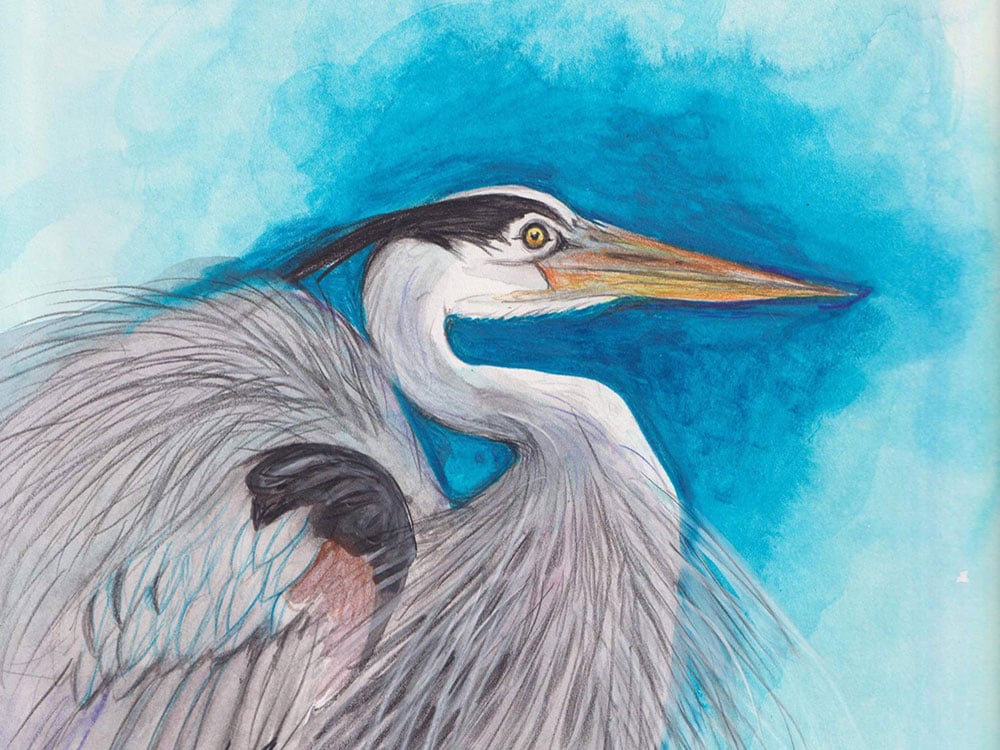


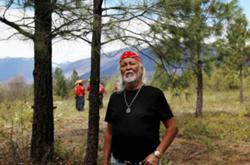

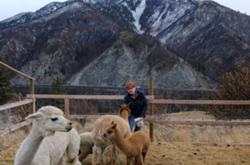







Tyee Commenting Guidelines
Comments that violate guidelines risk being deleted, and violations may result in a temporary or permanent user ban. Maintain the spirit of good conversation to stay in the discussion and be patient with moderators. Comments are reviewed regularly but not in real time.
Do:
Do not: